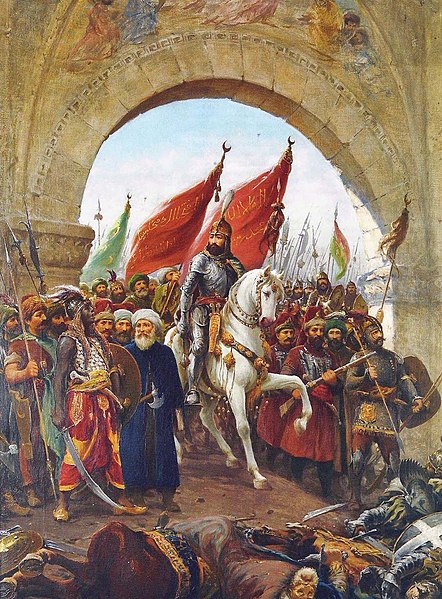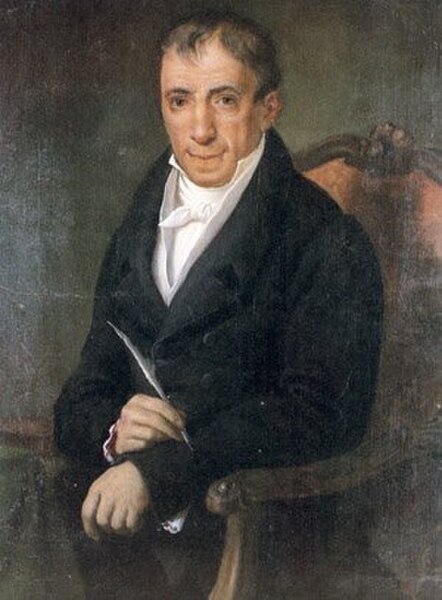The vast majority of the territory of present-day Greece was at some point incorporated within the Ottoman Empire. The period of Ottoman rule in Greece, lasting from the mid-15th century to the successful Greek War of Independence that broke out in 1821 and the First Hellenic Republic was proclaimed in 1822, is known in Greek as Tourkokratia. Some regions, however, like the Ionian islands and various temporary Venetian possessions of the Stato da Mar were not incorporated in the Ottoman Empire. The Mani Peninsula in Peloponnese was not fully integrated into the Ottoman Empire, but was under Ottoman suzerainty.
View of the Caryatid Porch, the Erechtheion, the west end of the Temple of Minerva Polias, and the Pandrosium on the Acropolis in Ottoman Athens in 1750s
Sultan Mehmed II's entry into Constantinople
Ottoman Janissaries and defending Knights of Saint John at the Siege of Rhodes (1522)
The "Battle of Preveza" (1538) by Ohannes Umed Behzad
Greek War of Independence
The Greek War of Independence, also known as the Greek Revolution or the Greek Revolution of 1821, was a successful war of independence by Greek revolutionaries against the Ottoman Empire between 1821 and 1829. In 1826, the Greeks were assisted by the British Empire, Kingdom of France, and the Russian Empire, while the Ottomans were aided by their North African vassals. The war led to the formation of modern Greece, which would be expanded to its modern size in later years. The revolution is celebrated by Greeks around the world as independence day on 25 March.
Top left: The camp at Phaliro. Top right: The burning of an Ottoman frigate by a Greek fire ship. Bottom right: The Battle of Navarino. Bottom left: Ibrahim Pasha of Egypt at the Third Siege of Missolonghi.
Portrait of a Greek armatolos by Richard Parkes Bonington (oil painting, 1825–1826, Benaki Museum)
Adamantios Korais
Cover of "Thourios" by Rigas Feraios; intellectual, revolutionary and forerunner of the Greek Revolution.








